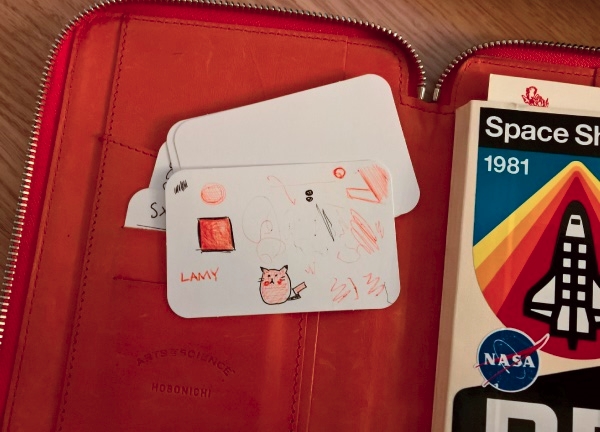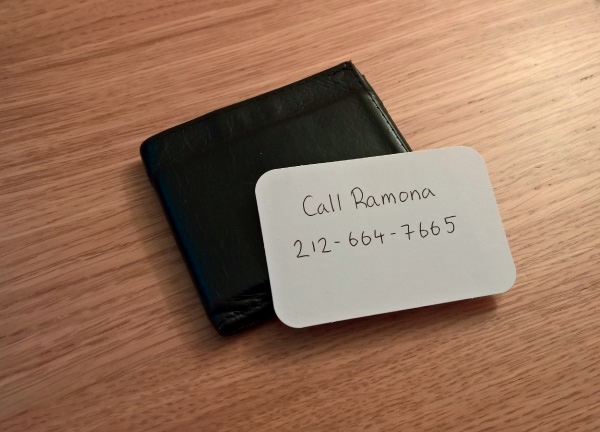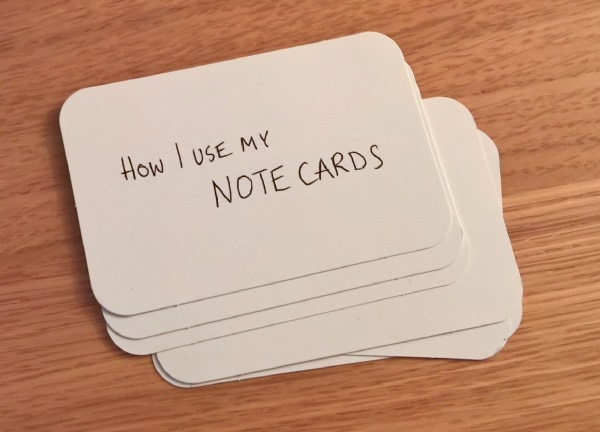For many writers and students, note cards (also known as index cards) are one of the best tools for planning large works and organising ideas. I use them all the time as part of my analogue note-taking setup, but also at my desk when I’m working through big ideas.
Conceptually, cards can exist on their own, or be grouped together into sequences or categories. Each card can be moved around spatially and reordered in ways that normal notebook pages cannot. This allows easy ordering and random access.
The physical limitations of the card help keep the content short and to the point. Having both a front and back helps add an extra dimension, if required.
In my system, the cards are used in addition to my notebooks and digital tools for many things, including:
- Forming and processing ideas into groups or sequences
- Planning order and estimated effort of tasks
- Making disposable notes for myself or other people
- Writing down phone numbers and details for calls to make
- Testing pens and ink (this happens regularly!)
- Anything random I don’t want to keep
- Doodles (like below!)

I have found the business card size to be better for my usage. I get blank ones with rounded edges from eBay – they’re cheap to buy in bulk and I’m happy with the quality for now. I used to use full size note cards, and certainly enjoyed using them, but now I’ve tried the smaller size, I find the larger ones to be too big for most of my tasks.
For me, the main benefit of their size is their portability. You can fit business cards into slots for bank cards as well as dedicated containers like portable business card cases, archive boxes, and other organisers. There’s no way I could fit a full size index card into my wallet!

Here’s an example of use when planning to make a phone call.
When I am going through my notebook on an evening, I may write down the details of a call to make to a utility company the next day. I would still write down the task in my notebook, but the phone number, account details, and any other bits of relevant information would be on the note card in my wallet.
Making the call could be done anywhere, as I always have my wallet in my pocket.
When I am done, I would tick the task in my notebook and copy down any new information gained from the call. After that, the note card can be either disposed of or stored for future reference. Though I don’t currently keep an archive of these cards, but I may want to in the future. Right now I copy the information down into Field Notes or OneNote as required, then put the card itself in the recycling.

I recently got a repositionable glue stick, which has similar properties to the glue on the back of a Post-it note.
When you use this glue on the back of one of these note cards it can be used just like a Post-it note, including repositioning and sticking to walls. I will see how often I use this over time, but I did use this method at the start of the year in order to priorities projects and move ideas around. Sticking them on my wall helped keep my desk clear while I was grouping and ordering.
Finally, I’d like to see this size of card gain more of a following. It would be fantastic to see a company like Nock Co. produce their DotDash cards in business card sizes. They are probably my favourite of the full size 3 × 5 note cards on the market, but I have yet to find anything of this quality in the business card size.
Follow @desk_of_jules on Instagram for more stationery photos!